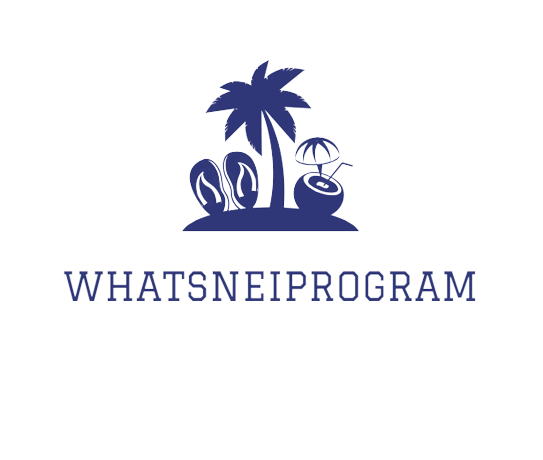Everywhere you look, people are trying to find common ground. We look for it in the people around us, our environment, and the hobbies that bring us joy. For countless generations, folk arts have been a source of bringing individuals and communities together. Crafting Connections: How Folk Arts Bridge Communities and Generations dives into the many ways folk artistry unites us all.
1. The Healing Power of Craft: Exploring the Cultural Benefits of Folk Arts
Folk arts have been a vital part of societies for centuries and have provided many cultural benefits over the years. From the impression of folk artists to the vibrant stories of festivals, the healing power of craft can certainly be seen across a wide range of cultural settings.
The practice of folk art is often unique to a specific region, community or culture. Each one reflects the people in a number of ways, and this can be seen in the patterns, colours, materials and styles that are used.
Craft, therefore, allows communities and cultures to come together and share a sense of identity and heritage. The sharing of stories, traditions and knowledge can go a long way towards providing a sense of wellbeing and belonging that is invaluable to any society. It is also a great way of connecting past generations to those of the present and future.
On top of that, many folk arts provide the opportunity for creative expression and exploration. Crafting can be a therapeutic process that allows us to express emotions that often cannot be put into words. Working with your hands can be a great way to relax and distract yourself from further stress in everyday life.
The Benefits of Folk Arts:
- Reflects cultural traditions and identities
- Shares stories, knowledge and experiences between generations
- Provides creative outlets to express emotions
- Aids relaxation and wellbeing
2. Roots of Tradition: Celebrating Multigenerational Folk Arts Practices
Since the dawn of time, folk arts have been used as a form of communal storytelling. Passed from generation to generation, they represent the history, culture, and values of a society. Even today, folk arts provide an opportunity to celebrate our shared ancestry and heritage through practices such as:
- Music: Folk music, with its traditional stories, melodies, and instruments, has a formative role in many communities. With acoustic instruments and vocal techniques passed down from the past, music upholds many of the shared values that define a cultural identity.
- Dance: Folk dances are among the most ancient forms of artistic expression. Folk dancing, combined with traditional costumes and movements, instills and preserves important aspects of communal memory and identity.
- During Musical Theatre: Musical theatre deals with ancient themes and stories, bringing together singing, dancing, and storytelling. These traditional tales often serve to educate while entertaining, highlighting important values from the past.
- Religion: Religion has long provided fodder for folk arts, and many of the stories, fables, and rituals associated with religion have been passed down orally through generations. These folk art forms create a unique connection with the divine, connecting the faith of the present with the faith of the past.
From music and dance to theatre and religion, folk arts embrace the rich and ancient legacy of tradition. They provide a way for diverse societies to celebrate their common ancestry, and remember the values that have been passed down for generations. While they may take many forms, folk arts remain a vibrant expression of our shared cultural heritage.
3. A Creative Bridge Across Cultures: Experiencing Cross-Cultural Connections Through the Arts
Art can act as a bridge to connect cultures from around the world, creating a shared experience that transcends national boundaries. From art fairs to concerts, festivals to dancing, the opportunities to bridge cultural divides and connect with other cultures through creativity are plentiful. Here are some of the ways to experience cross cultural connections through the arts:
- Music – Music is one of the most powerful ways to bring together cultures. You can listen to traditional songs from different cultures, play music together and learn about different musical styles, or create new works that combine different musical styles. Music shares the language of the soul, and can break down barriers like nothing else.
- Visual Art – By looking at visual art from different cultures, you can explore what they appreciate, the stories they tell, and the emotions they evoke. From frescoes to graffiti, you’ll have the chance to discover the stories of distant lands, and gain a deeper understanding and appreciation of a different culture’s art.
- Performance Art – Live performance can captivate audiences and transport you to a different land. Whether you are watching ballet, a local theater production, or a concert – performance art can bridge cultures in a way that few other activities can. Performance art celebrates cultural diversity and can bring people together to share a powerful, emotional experience.
- Dance – Dance has the power to move not only bodies but also cultures. By learning cultural dances from around the world, you can understand the context and importance of different dances and gain insight into a unique culture. You can also collaborate with dancers from different cultures to create something utterly new and beautiful, a bridge between cultures that speaks of mutual respect and understanding.
You will discover that, beyond differences in language and customs, cultures around the world are connected by a shared appreciation of the beauty of the arts. Connecting with others through culture and creativity can help build bridges that can go on to stand the test of time.
4. Weaving Strength in Community: Examining the Impact of Folk Arts Engagement
As cultural traditions ebb and flow, folk arts remain one of the quintessential means of connecting to a history and understanding of a community. Examining the impact of folk arts on a society is indispensible in generating an environment of collective strength and learning.
When looking into the question of how folk arts generates communities of strengthened ritual and tradition, there are several factors to consider:
- Cultural Cohesion – Folk arts have the power to build bridges between diverse cultural groups and weave disparate people into a stronger unit.
- Role of Local Artisans – Arts and crafts practices locate the art of traditional handicrafts within a population, spurring economic growth and development.
- Maintaining Community Stories – Folk arts perpetuate community histories by providing a platform to pass ideas and stories through to future generations.
As folk arts appreciation flourishes, so does an understanding of both traditional and contemporary approaches to art. Folk art works might be studied in an art class or gallery setting, but also in the context of their original function embedded within a culture. This traditional approach of commerce, ceremonial display, or storytelling is best explored through the lens of the surrounding community.
When it comes to the impact of folk arts, there is no shortage of ways for individuals to explore their creativity and share in the story of a collective. Through experiences of self-reflection, appreciation of others’ work, and mutual learning, the power of folk art shines bright.
5. Telling the Story: The Value of Preserving Traditional Arts
The traditional arts have been around for centuries, and have the power to communicate stories, values, beliefs, and culture through music, song, dance, and more. These priceless works of art hold immense value far beyond simple entertainment.
They’re beacons of the past, providing insight into how our ancestors lived, connecting us to our roots, and enriching our understanding of our shared history. Additionally, they can be used to explore our identity and find purpose in our lives. By preserving the traditional arts, we can keep these invaluable stories alive.
Preserving traditional arts therefore is essential for the following reasons:
- They are pieces of our collective history that tell the story of our past.
- They provide a link to our ancestors and roots, fostering appreciation of one’s heritage and culture.
- They inspire creativity and connection to our identity and purpose in life.
By appreciating the deep value of preserving the traditional arts, we can make sure that these invaluable stories are enjoyed for generations to come. Through organizations, movements, and educational systems, we must all take steps to ensure these important pieces of our history will be passed on.
6. Crafting Cultural Connections: Understanding the Power of Folk Arts to Unite and Strengthen Communities
Folk arts are powerful forces in connecting people, creating unity, and strengthening communities. From songs and stories to crafts and craftsmen, these practices are key in preserving culture and history.
- Songs & stories: harbor a treasure of history and culture, transporting us through time. They help celebrate accomplishments and moments, as well as bring individuals together. Folk music also serves an educational purpose, with stories of lessons and warnings.
- Crafts & craftsmen: craftsmanship is often a tangible way to remember and pass down past practices. It is the skill and carefully crafted items that honor cultural heritage and can even be used for economic growth.
Folk arts also provide an opportunity for individuals to showcase art and culture in a unique way, something that can’t always be done through written word. It’s about the amalgamation of rhythm and movement that can be seen, heard and even felt. With the preservation of these practices, future generations gain a valuable insight into history and tradition.
Folk arts are the glue that binds culture together, helping to bring people from different backgrounds and cultures to one common understanding.
Seemingly small pieces of history still haunt the present, just as the beautiful rhythms of folk music bring comfort to those feeling lost. A connection to these arts forms can bring people to a feeling of inclusion and security. Folk music especially creates an opportunity for deep listening, and this can be used to build and strengthen relationships and a sense of community.
From city squares to living room couches, folk art is alive and well and continues to bring us together. Whether it’s spinning a yarn or a top, each creation is a testament to the art of crafting connections, and to the power of legacy. We’re all part of a collective history, connected through the stories of our shared human experience.


